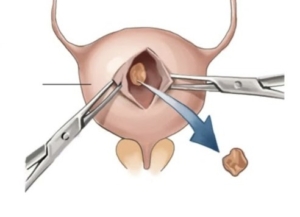Cysto-Lithotomy
Open removal of a large bladder calculus
Why is it done?
- To break up a large bladder calculus (stone) that cannot be done endoscopically.
- It is done with open surgery (a cut above the pubic symphysis).

Risk factors causing this:
-
- Bladder outflow obstruction
- BPH with chronic retention.
- Urethral stricture.
- Neurogenic bladder.
- Renal calculi disease.
- Metabolic disorders.
- Malnutrition.
- Chronic infections.
- Foreign objects in bladder.
- Bladder outflow obstruction
How is it done?
 A General anesthetic will be given.
A General anesthetic will be given.- A sterile surgical field is prepared.
- Prophylactic antibiotics are given.
- An indwelling catheter is inserted, and the bladder is then distended with fluid (saline).
- A small lower abdominal incision is made, splitting the Linea alba and opening the distended bladder in the midline.
- The stone is removed through the whole with a grasping instrument.
- The bladder is inspected and then closed in 2 layers.
- Skin is closed.
- A catheter will be left for 2 weeks.
What to expect after the procedure?
- Hematuria (blood in your urine)
- You will have an indwelling catheter (IDC), which will remain in your bladder.
- You may have a continuous bladder irrigation with Saline to help clear the bleeding.
- When your urine is clear and your bowels are functioning, you will be discharged with catheter care instruction.
- You will have this indwelling catheter for 2 weeks.
- A cystogram will be arranged at approx. 14 days to exclude any urine leaks prior to removal of your catheter.
- If there are any urine leaks, your catheter will remain a further 7 days, or until the leak is sealed.
- Pain on initial passing of urine when the catheter is removed.
- Bladder infection ranging from a burning sensation to, fever, to puss (rare).
- Lower abdominal discomfort which will persist for a few days.
- NB! Each person is unique and for this reason symptoms vary.
What next?
- This all depends on what is found during the procedure. All the options will be discussed in detail.
- There may be some blood in the urine. This can be remedied by drinking plenty of fluids until it clears.
- Anatomical causes of the stones will be discussed and surgical options in treatment may be discussed
- Patients should schedule a follow-up appointment within 4-6 weeks to discuss the etiology of the calculus as well as what other procedures may be involved to prevent this from occurring again.
Download Information Sheet

Leave a Reply
Want to join the discussion?Feel free to contribute!